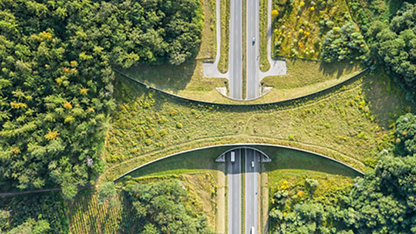Tailings dams are large containment structures designed to hold the waste – slurry or tailings – from mining processing operations, on a permanent basis. But when they fail, the results can be catastrophic. A dam collapse in Mexico in the 1930s resulted in more than 300 fatalities, while several major failures since the 1980s have had a massive environmental impact on agricultural land, creating acidic or contaminated water that needs neutralising.
As recently as this century, three significant tailings dam failures have occurred in Brazil, the most recent two in the same mining area. The 2015 collapse at the Mariana dam was a major environmental disaster: 60 million cubic metres of waste emptied into the Doce river and from there poured into the Atlantic Ocean. In January 2019, in the Brumadinho dam failure at least 248 people died and the full environmental cost is not yet known.
A number of characteristics make tailings dams vulnerable to failures. These include:
- inappropriate construction material for containment structures
- increasing the dam's capacity beyond its original design
- inadequate geotechnical investigation and design substandard construction
- insufficient monitoring and control during operation
- not fulfilling the requirements for monitoring and maintenance during closure and post-closure phases.
These catastrophes have huge consequences, from the loss of life and livelihood and contamination of agricultural ground to loss of community residences, schools and hospitals, and of services such as water, power and roads. From the mining company's perspective, there is also a massive cost in terms of business interruption, dam reconstruction, compensation, rebuilding infrastructure, environmental restoration and reputational damage.
Unfortunately, failure of a tailings dam is usually sudden, and even with monitoring it has been difficult to predict. Extreme rainfall, seismic events, the consistency of material used for dam construction or poor drainage can, among other factors, result in the retaining structures failing. Tailings material then becomes a devastating mud flow that destroys everything in its path.
What can be done to prevent similar events? Put simply, more robust operational and closure practices; wider adherence to current established guidelines, such as those from the Canadian Dam Association; newer technology to assist with continuous dam monitoring and surveillance. The regularity of tailings dam failures also suggests that mining companies should focus more on surface issues, particularly tailings dams and waste disposal operations.
Many initiatives are now in hand to rethink the way the dams are designed and constructed, particularly the geotechnical, geohydrological and geophysical aspects of the site and the tailings material. Greater emphasis is being placed on continuous geoscientific monitoring of the dams, and on introducing more regulation of such monitoring to prevent failure. It is likely that a code of practice similar in purpose to the Code for Reporting of Mineral Exploration Results, Mineral Resources and Mineral Reserves will be developed, under which the competent person responsible for the various phases of design, construction and operation, and maintenance after closure, would be accountable.
Many modern mines already use safety techniques such as radar and laser monitoring that should warn of any structural problems, and it is not unusual for additional monitoring of conditions using drones, piezometers, water-level gauges, surface marks and regular checks on the structural integrity of the containment structures.
Published date: 20 October 2002
“Many initiatives are now in hand to rethink the way the dams are designed and constructed, particularly the geotechnical, geohydrological and geophysical aspects of the site and the tailings material”
Technological advances
The tools available to mine surveyors for their measurement duties have changed dramatically in recent years. Laser scanners have significantly improved the efficiency and safety of routine tasks, such as determining the volumes of stockpiles and pits at the end of each month.
A range of airborne systems are also now commonly used for any mine surveying tasks that are impractical with ground-based techniques for size, cost or safety reasons. Geophysical methods can for instance detect internal erosion processes and anomalous seepage at an early stage. However, although these have been tested to monitor and investigate earth dams, they have yet to be used more often in assessing the integrity of tailings dams.
Using radar and lasers to measure dams is time consuming and costly because measurements have to be taken from each side, but a drone is far more efficient and reduces the risks to surveyors. No longer do they need to be in such close proximity to dust and dangerous substances; drone surveying can be done remotely and safely. Data can now be collected quickly – data that would previously have taken many hours depending on the size of the dam, and without putting the surveyors at risk. Inspections and checks can be carried out more regularly as well, because the hardware and software is now relatively easy to use.
In addition, some companies have been developing satellite systems that can improve dam monitoring in an initiative funded by the UK Space Agency's international partnership programme. Aimed primarily at regulators responsible for monitoring many tailings sites over a large area, this will help improve transparency in the sector; the system could also provide vital extra time to deal with a potentially risky situation.
Meteorological forecasting and hydrological models are being used in an attempt to predict the impacts of rainfall on the reservoirs and the embankment structures. By exploiting global navigation satellite system data with base stations, accurate movement data can be gathered for key points on a structure, and movement over wide areas can be monitored to warn of landslides. Optical satellite data sets will allow the monitoring of indicators of pollutants that may leak from a tailings dam.
Remotely operated hydrographic surveying systems have been used around the world for quite some time, but only recently adapted to suit the challenges of surveying water storage and tailings dams in mining areas. One example is a battery powered, remotely operated hydrographic survey vessel that can be fitted with either a single- or dual-frequency echo-sounder. For mine site applications, where dams are likely to have a high concentration of suspended particles in the water, the latter can record a full echogram of the sonar response, which enables the results to be analysed in detail.
The safety and stability of tailings dams is inextricably linked to the management and operation practices of mining companies. It is hoped, therefore, that dam failures will decrease in number thanks to the use of this new technology, along with increasing company stewardship, better oversight and independent review panels, as well as more widespread adherence to appropriate guidelines and regulatory frameworks. The mine surveyor has a key role to play in this process by ensuring the use of robust surveying and measurement systems.



:16-9?$dpp-promo-large-xxl$&qlt=85,1)



:16-9?$dpp-card-xxl$&qlt=85,1)












